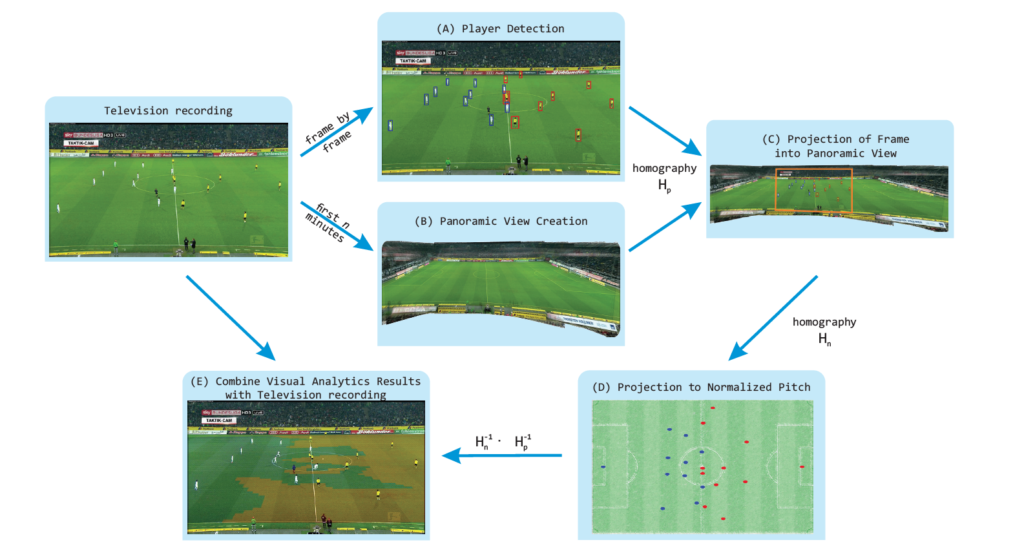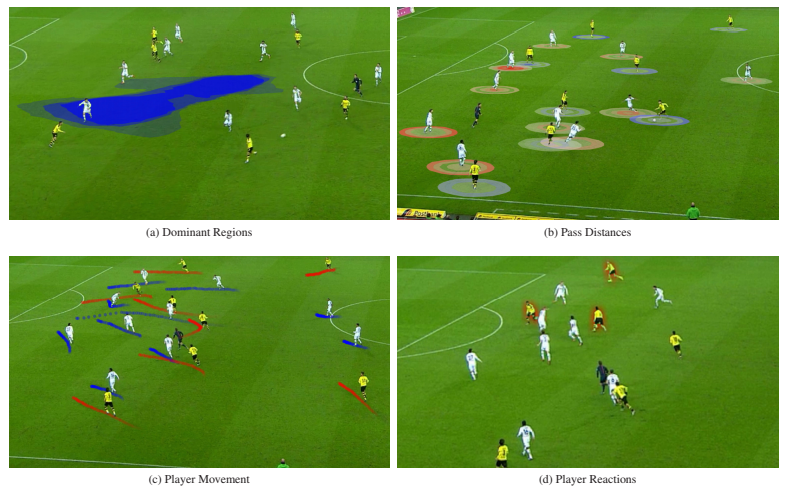Advances in computer vision, machine learning, data visualization, and human-computer interaction are helping to make sports analysis a more sophisticated method of improving team performance and finding weaknesses in opposing teams.
Over the last several years, interest in sports data analysis has grown rapidly in research and practice. Teams are increasingly hiring data and video analysts, and soccer teams in particular have increased their focus on off-field evaluations.
Traditionally, analysts conduct video reviews, which are time-consuming and require the analyst to memorize and annotate plays. To address these challenges, a team from the University of Konstanz, Germany developed a new sports data analysis method that uses visual analytics to capture and track the movement in soccer game videos. It then automatically displays advanced 2D visualizations superimposed on the original video recordings.

Figure 1: Workflow of the integration of video data visualizations
To automatically track different players, the new software uses edge-detection and color-based contour analysis. The system first creates color histograms – probability distributions for each color – to generate a unique representation for each player on manually marked areas of the field. The software then matches pixels from the broadcast to the different color histograms to detect the probability that a histogram and a series of pixels match. Once the system recognizes a match, it’s able to calculate the positions of the player that each histogram represents.

Figure 2: The main visual analytics techniques for region (a), event (b) and player analysis (c and d)
Graphics display areas of the field where one team is controlling play and highlight free spaces where a player could beat his or her opponent to a spot on the field.
Event analysis expands the system’s tracking to calculate the risk of certain passes based on the distance between teammates and opposing players.
“The visualizations and the underlying system are highly interactive,” said Manuel Stein, research fellow at the University of Konstanz. “Users are able to define how they want the resulting visualizations to appear as well as the visual variables to use. To this end, a large number of possibilities are allowed as we are able to display all visualizations that could be shown on a two-dimensional pitch.”
To evaluate the system, the researchers consulted the experts: a former soccer player and a former coach for the German soccer club FC Bayern München. When using the system, they both appreciated the ability to do analysis directly in the video. Both said the embedded analysis tools and visualizations in the video recordings were natural for in-depth analysis tasks in soccer. They also noted how the visualizations could allow analysts to contextualize their evaluations, which they felt was the result of the researchers’ advanced approach.
Moving forward, researchers hope to expand and streamline this system to enable automatic analysis of video data across different team sports. In addition to soccer, they have successfully tested the technology on basketball, handball, lacrosse and ultimate Frisbee. The researchers are also open to pursuing opportunities to work with professional sports teams.
While designing the system’s tracking capability, the researchers also developed new visuals to demonstrate analysis of the field, game events, player movements and player reactions that could be used by sports broadcasters.
“Our research happens at the intersection of several of the most current technologies,” said Daniel Keim, professor at the University of Konstanz. “It is widely applicable and easily extensible, enabling players, teams, trainers, sport journalists and fans to analyze the sports data and understand the game dynamics.”
Using single-camera video recordings, this software will allow sports teams to quickly and more accurately understand its opponents and its own opportunities to improve. While it will not yet replace human analysts, it will help those analysts provide greater insight on individual players and the team as a whole.
To learn more about sports data analysis, visit the IEEE Xplore digital library.





